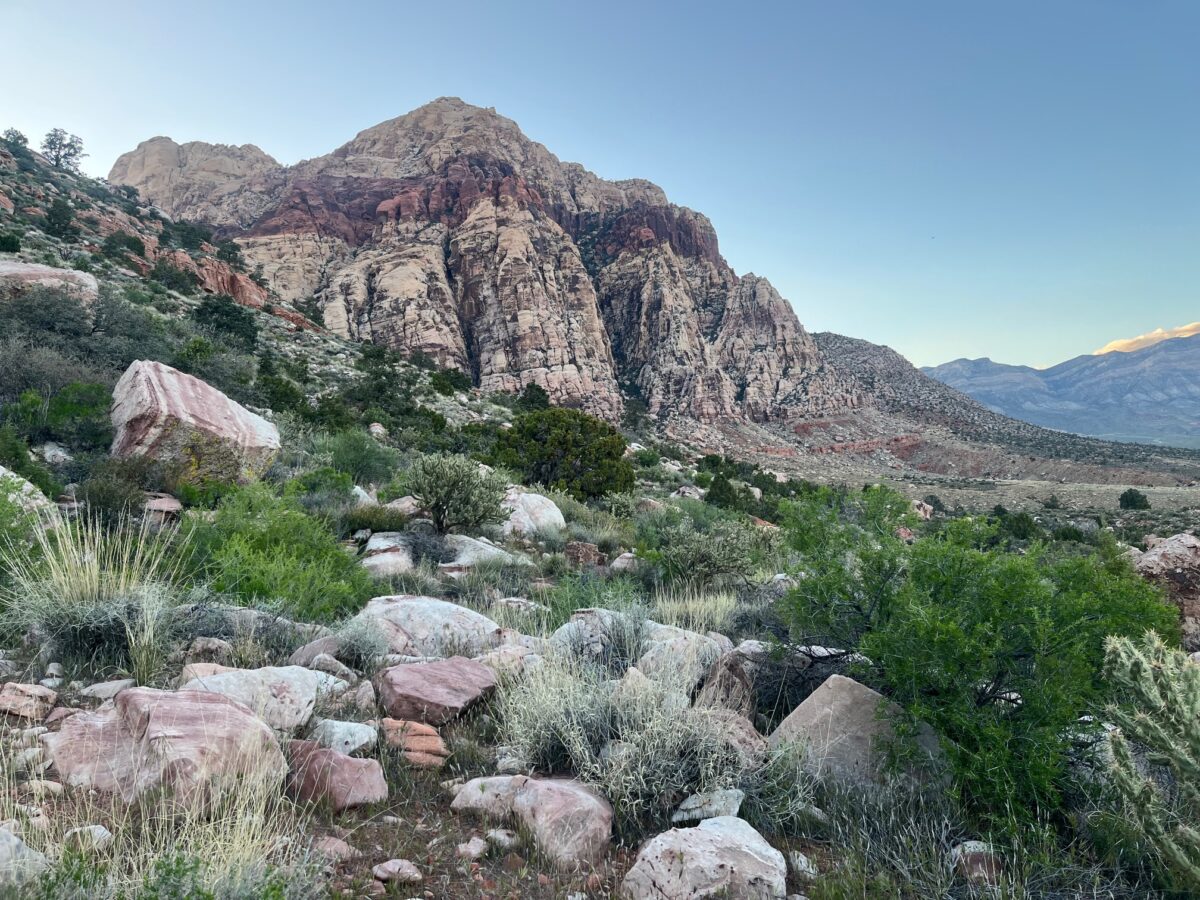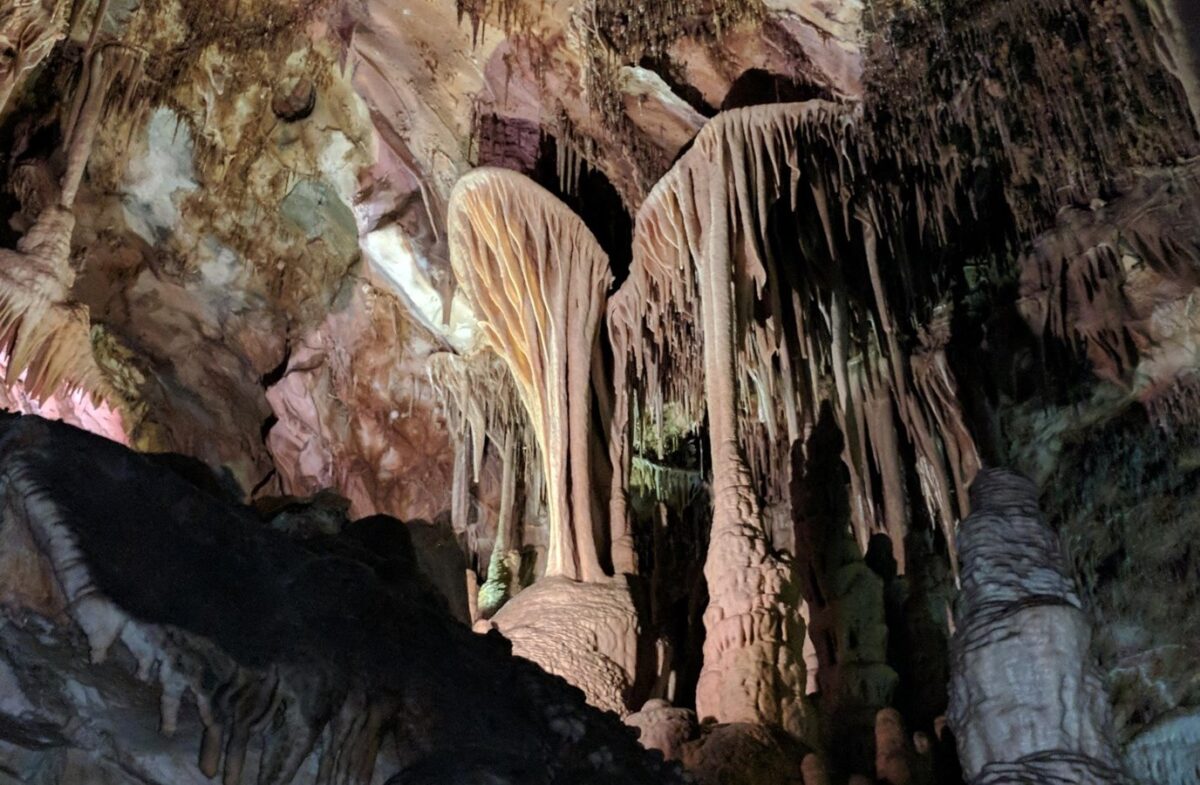Permits, shuttles and reservations: Barriers to outdoor recreation on the rise in Nevada

Summer for many people means s’mores and ranger programs at a campground or loading the family into the car for a day at the lake.
But as more people seek to visit the outdoors, public land managers in Nevada and elsewhere are grappling with how to address the crowds. The solution, some say, lies in measures such as reservations and permits that help limit crowd sizes. But those systems can exclude certain groups from some of nature’s crown jewels, according to experts.
“Access to the outdoors has … always been exclusionary in some fashion,” said Michael Childers, an associate professor at Colorado State University who focuses on tourism and visitation. “The real hangup is … who is going to be able to pay?”
With the largest percentage of federal land in the nation, much of Nevada’s public land is free to recreate on. But many of the state’s outdoor showpieces, as well as popular nearby recreation areas, now require reservations or permits to access.
Popular parks such as Lake Tahoe’s Sand Harbor require visitors to have reservations during peak visitation periods. With limited parking at a popular Lake Tahoe West Shore trailhead, visitors must now book a paid shuttle service to access the area. Red Rock Canyon National Conservation Area requires visitors to not only have reservations, but to book the specific hour they will enter the park.
“Outdoor recreation is just an upward trending industry. The amount of spaces people can use isn’t necessarily expanding; therefore you just have more people going to the same number of places people used to be able to go. That’s obviously not sustainable,” said Nevada State Parks Administrator Bob Mergell. “There are spacial limitations with how many people you can stuff into a state park or a recreation area.”
But reservations and permits require more than money. They require the ability to navigate an online reservation system, a challenge for the 1 in 10 Americans who don’t own a smartphone or utilize the internet, or a flexible work schedule to plan a vacation six months or a year in advance.
Measures such as fee-free days and free state park passes offer some reprieve, and recent state legislation takes a step toward more public transportation services to popular recreation areas.
But the end result of efforts to curb over-visitation is a scenario where access becomes a privilege and public lands become exclusive, affecting a variety of people, including low-income residents, seniors and local residents, according to Will Pattiz, co-founder of the public lands advocacy group More Than Just Parks.
“You have these huge user groups that are locked out,” he said.

Crowds were ‘excruciating’
In 2023, Nevada State Parks implemented a pilot reservation system for its most popular parks, including Sand Harbor and Big Bend of the Colorado in Southern Nevada; this year, state parks rolled out its full reservation platform.
The reservation system at Sand Harbor aims to stop cars from parking on the highway outside the park’s entrance while waiting — sometimes for hours — to get in.
“It was excruciating for people who were trying to commute for work or just get by on the road there,” Mergell said. “Now, there’s no reason for anybody to get queued up on the highway.”
People parking on the highway is also one of the primary drivers behind the recently launched shuttle system on Tahoe’s West Shore.
Last month, Keep Tahoe Blue and the Tahoe Fund launched a shuttle in efforts to eliminate roadside parking along the busiest portions of Tahoe’s West Shore near Emerald Bay. During busy summer periods, drivers often park illegally there, damaging vegetation, and walk along the highway, creating a safety hazard.
Touted as making “it easier for everyone to experience one of the most beautiful places in Tahoe,” the shuttle has been a success, organizers say.
In the first three weeks, nearly 1,300 people rode the shuttle, while California Highway Patrol issued dozens of citations to drivers who parked on the side of the highway.
But it comes at a cost. The total price of the shuttle for a family of four is $30 round trip, plus any parking fees charged at shuttle pick-up locations.
At Sand Harbor, there’s a $5 fee for online reservations, which are required to enter the park in the busy morning hours.
As Mergell told The Nevada Independent, the goal is never to price a family out of visiting a state park, and first-come, first-served access is available later in the day.
“Increasing the fee isn’t going to be one of the approaches we want to take to limit visitation,” he said.

‘Public lands are aspirational’
Some of the nation’s earliest public land conservation efforts, such as Mount Rainier National Park in Washington, were developed with the idea that user fees would fund park operations, but by the 1930s, the federal government was investing money into public lands and services to pull the nation out of the Great Depression. The Civilian Conservation Corps, for example, built trails and campgrounds across the nation. In Nevada, corps enrollees built the first campground at what is now Great Basin National Park, as well as a new entrance tunnel into the park’s famed Lehman Caves.
Visitation to public places skyrocketed after World War II, and the federal government responded by building campgrounds, parking lots and other visitor amenities.
“The problem is when you build it, they will come,” Childers said.
By 2021, 54 percent of all Americans reported recreating outdoors; by 2023, that had grown to more than 57 percent — nearly 200 million people.
And many of those people are recreating in Nevada. Nevada’s 27 state parks, for example, saw a combined 3.8 million visitors in 2022; in each of the last two years, more than 4 million people visited them.
But in the 1980s, then-President Ronald Reagan proposed large-scale funding cuts for public lands along with increased access fees. (Reagan’s handbook for much of his conservative policy making was The Heritage Foundation, the same conservative think tank behind much of the agenda of President Donald Trump’s current administration.)
The following decade, under a Democratic administration, Congress authorized a temporary fee program that has never gone away.
Now, Trump is rapidly cutting funding and staffing at federal public land management agencies. The National Park Service has lost about one-quarter of its staff since the start of the year, and one version of the proposed 2026 federal budget would cut billions in spending from federal land managers, including a record $1.2 billion cut to the National Park Service. The House is seeking a smaller cut of $176 million and the Senate is advocating for no cuts.
That confluence of incredible growth and use and dwindling resources, Childers said, leads to a web of reservation systems and services, resulting in what he calls “pay to play.”
“The promise of public lands is they are there for all of us,” he said. But with reservations, fees and other restrictive measures “it’s turned into a zero sum game — if there's a winner, there’s a loser.”

An ‘inflection point of inclusivity’
This year, Nevada lawmakers passed SB405, a bill creating a Transit-to-Trails Task Force with the goal of identifying how and where public transit can be expanded to recreation areas. Lack of transportation is repeatedly cited as one of the main barriers to opening access to recreation, said Olivia Tanager, director for the Sierra Club Toiyabe Chapter; the new law is a small step toward increasing access to the outdoors for Nevadans.
Approved unanimously in the Senate, the bill passed 40-2 in the Assembly, with Assm. Danielle Gallant (R-Las Vegas) and Gregory Hafen (R-Las Vegas) opposed.
“There are kids in Reno who’ve never been to Lake Tahoe because their parents don’t have a vehicle or the cost of gas is so high,” Tanager said.
She referenced a similar challenge in Southern Nevada, where many of the families the club works with have never experienced Red Rock Canyon, where there is no public transportation.
A spokesperson for the Nevada Division of Outdoor Recreation declined to provide an interview for The Nevada Independent to discuss state efforts for increasing access and inclusion.
Barriers such as lack of transportation create what Tanager referred to as a “nature-equity gap” because access to the state’s outdoor spaces are distributed unequally by race, income and age.
The Center for American Progress reports that more than half of Nevadans of color live in areas that are considered “nature deprived”; meanwhile, a 2024 report by UNR’s Extension found that an overwhelming majority of Nevada state park visitors are affluent, white and college educated.
“We’re at kind of an inflection point of inclusivity in the outdoors,” Tanager said, pointing out that many newly implemented federal policies reduce inclusivity and add more barriers.
“Everyone should be able to witness the azure blues of Lake Tahoe or the deep reds of Red Rock, not just those who can afford a car and gas to get there,” Tanager said.
